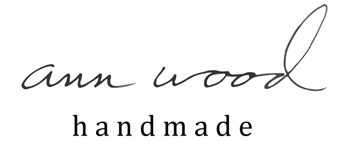One of the great things about a sew-along is it gives you a container, some structure, for a project you might have on your someday list. It breaks it down into manageable pieces and those milestones create momentum. Plus the fun of working on something with lots of other people, the extra motivation and inspiration that comes with that. And you get insight and tips that go beyond the pattern. We can take deeper dives into stuff like fabric choice, sewing tips and details.

October is a perfect month to make a crow (or raven) and the first ever! ann wood handmade sew-along begins on Friday September 30th 2022. That gives you (and me) two whole weeks to get your stuff together.
A great way to start is the box method. An actual container. Everything I make starts in a box and lives there until it’s done. The boxes are for organization and they are also a thinking tool. Most importantly a way to start, it is very easy to put things in a box.
In the sew-along posts I won’t be recreating every step of the pattern but I will be demonstrating some steps with further detail and tips. Also if you are participating and tagging on instagram, your progress photo might get featured.
Please use #annwoodcrowsewalong and #annwoodpattern . And – also optional -there’s a facebook group you can join here.
what you’ll need to participate:
The crow pdf sewing pattern (sorry booklets are not currently available)
Some time – the sew-along will take place over 4 weeks. I’ll give you a schedule on the kick off day (9/30) of what needs to be accomplished each week. Plan on having 2 – 4 -ish hours per week to work on your crow steps.
The pattern contains a material list but a couple notes:
Fabric – For the body a medium weight cotton is ideal. Scraps of silk and velvet work well for feathers and details. Incorporate different shades to give the feathers iridescence – very dark blues, green and purples work well.
Old or vintage clothes are great – suits, lace, prints over-dyed with black would be cool. And speaking of prints, your body fabric does not need to be solid. I used a calico print for the crow in the pattern. Most important is to have a variety of sheen, textures and tones.

Really old garments are interesting and inspiring to work with, lots of pleats and trims etc. Ebay is a good source and there is a helpful link in the crow pattern to a specific search category that I’ve been using for years. If you are persistent you can pick up damaged antique garments for not too much money that make great feathers.
There are resource links in the pattern for a couple supplies that are out of stock. I don’t currently have an alternative source for the paper covered wire for feet so we will use the alternative method included in the pattern and make our own. You can find the 18 gauge wire you’ll need in most hardware stores. And floral tape is available in lots of places online and in most big craft stores.
Let’s get inspired! Checkout a few crows made from the pattern.

Meg McElwee (sew liberated) wrote a beautiful post about her experience stitching her crow – check it out here.
And more awesome crows below – links to the makers where possible.
1. by Maralee, 2. by Brandi, 3. by Amy, 4. by Donna 5. by Elizabeth



































































































































